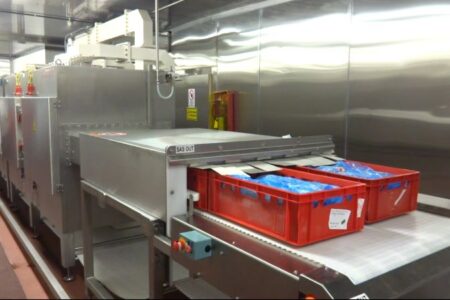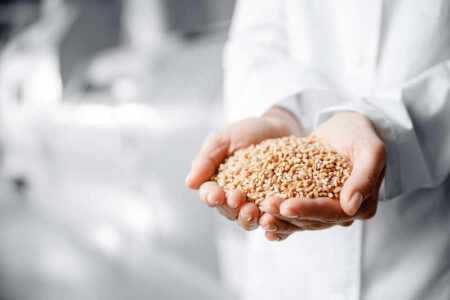PET shop

Adopting and developing a more sustainable approach throughout the supply chain is undoubtedly one of the biggest challenges faced by the packaging industry. Nicholas Bloch considers the contribution of PET.
Polyethylene terephthalate (PET) is a form of polyester and is one of the most widely used consumer plastics. Its importance to the beverage industry is highlighted by the fact that bottle production represents some 30 per cent of its total use [1].
The major benefits of PET as a packaging material are numerous: it is strong, shatterproof, lightweight, transparent, safe and, importantly, recyclable, with an inherent barrier which makes it particularly suited to a wide range of food and beverage applications. It also offers significant design flexibility for brands that want to stand out on the supermarket shelf.
In discussing what is meant by a sustainable package it is important to understand that its primary function must be to protect the food or beverage it contains and deliver it safely to the consumer, surviving all the challenges of the supply chain. Beyond that, sustainability considerations include how the environmental footprint of the package can be minimised through reducing the use of raw materials and other resources; reducing energy use or employing renewable energy sources, especially during production and transportation; building recycling principles into the design stage; incorporating recycled content in the packaging; and adopting end of life options, including recycling.
At the same time, for that product to remain sustainable it needs to be attractive to the consumer, and so brand, design and consumer experience considerations are important also.
Lightweighting
As a lightweight material, PET already provides significant environmental advantages in terms of lower transportation costs and reduced fuel emissions. Its unique geometric properties and inherent barrier qualities, combined with innovative designs, have increasingly allowed manufacturers to use less plastic resin in the packaging process. There has been much research and development into how this can be further improved through lightweighting, a prime focus for the beverage packaging industry whereby the amount of raw material required to produce a bottle is reduced through the bottle design process.
Lightweighting a bottle should not compromise the integrity of the bottle performance or the consumer experience, so a design which prevents the ‘over squeeze’ issue that can result in the spilling of contents unintentionally when using ultra light bottles is essential. By reducing the packaging content, it offers environmental advantages on two fronts: firstly, the savings achieved in the PET resin raw material itself; and, secondly, further reducing the impact of transporting the bottles throughout the supply chain.
Optimising energy
Recognising that sustainability in beverage production is influenced by a number of different factors, one focus that is common to so many industries is how energy use can be optimised. In terms of energy inefficiency, the blow moulder is often the biggest consumer given that it accounts for as much as 70 per cent of electricity consumption on a PET production line. A proportion of this is attributable to compressed air. Programmes are now available which provide an initial audit to measure electricity consumption, along with influencing factors such as air pressure and leaks, with mechanical testing on all the blow moulder’s sub assemblies. The process and technical qualities of the package and the overall production environment in which the machine operates can then be measured to provide a comprehensive analysis from which a personalised action plan is developed.
Through this, energy and cost saving targets can be identified, with ongoing monitoring of energy and utilities consumption put in place to see if those targets are being met. It also offers the opportunity for continuous improvement initiatives to be adopted, based on the strategic information supplied, to reduce waste and improve sustainability measures.
Audits can often also highlight the potential for new technologies to be employed which can improve the energy performance of an existing line. Lamps can consume as much as 90-95 per cent of the electrical power used by a PET blower so any focus here can bring substantial benefits. Eco ovens, which require fewer heating modules and lamps, can be installed on a blow moulder to reduce preform heating time and to ensure more efficient use of energy.
Recycling rates
The recycling of PET is certainly crucial in enhancing its position as a sustainable material. Producing virgin PET requires the use of resources which are finite, so adopting processes which allow it be 100 per cent recycled are key. Analysis has shown that recycling of PET uses two thirds less energy than that required to manufacture virgin PET, demonstrating the clear environmental benefits of the process [2]. In principle, all PET bottles could be manufactured using recycled PET (R-PET). This is because, as long as the resulting R-PET is approved for food contact, which it easily can be through the regulatory environment that is in place, then it can be used for this purpose.
However, there are sometimes issues in the take-up of R-PET. This is largely in terms of marketing since the slight discolouration that can result from employing R-PET does not impact in any way on the bottle’s performance.
By far a greater barrier to the adoption of R-PET is the lack of availability of quality R-PET. Currently the demand for R-PET outstrips supply, due, in part, to the traditional mechanical methods of recycling PET bottles in which it was previously difficult to efficiently separate the contaminants, particularly dyes, from the plastic. Collection rates of recycled bottles are also an issue, with highly fluctuating rates across different regions.
While global recycling rates continue to improve, there is still much work to be done in post consumer PET packaging. In Europe, more than 60 billion bottles were recycled in 2012, representing an overall collection rate of more than 52 per cent [3]. In the US, the gross recycling rate for 2012 was 30.8 per cent – an improvement of 1.5 per cent on the 2011 figure, certainly helped by a surge in the recycling of single serve PET water bottles of almost 20 per cent [4].
Leading the way in terms of recycling is Asia with a rate of almost 80 per cent, whereas in eastern Europe only 12 per cent of bottles are collected and recycled [5]. However, it is important to qualify those figures and recognise that in many developing countries, a discarded PET bottle has a greater intrinsic value. For those living in poverty, the collection of discarded bottles from households or open landfill sites provides a revenue stream and this is one contributory factor in the high recycling rates of certain regions.
The emphasis on collecting bottles needs to continue, with commitments to further improving collection rates. The technological advances being made to optimise the use of those bottles also needs to be encouraged, building on the new filtration processes being adopted to generate PET flakes in a way which is both more eco friendly and more cost effective. This will enable the production of more new bottles from R-PET, and also allow the recycled PET flakes to be used in a wide range of other applications.
Despite the challenges of sourcing R-PET, many major beverage brand owners are committed to increasingly adopting it in their bottling processes, with some already achieving usage levels in excess of 50 per cent for certain product lines.
Meeting future demand
Forecasts for 2030 suggest that demands for energy will have increased by 50 per cent, food by 50 per cent and water by 30 per cent, alongside the additional pressures brought about by an increasingly urban population. This means that finding ways to optimise the planet’s resources in meeting those demands will only intensify, and with it the need to ensure that the packaging we employ can contribute to that sustainability agenda.
PET has a vital role to play. The responsible use of virgin PET across the supply chain can bring immediate and significant sustainability benefits. Extending that beyond the virgin resin, in its recycled form PET can be reused time and time again, reducing consumption of what is a finite resource.
Already the most widely recycled plastic in the world, through initiatives to further improve collection rates and the methods of recycling, PET can further strengthen its position as the sustainable package of choice. It is about taking what is currently in the waste stream and putting it in the resource stream, reaching for the ultimate objective of a closed loop, sustainable packaging supply chain.



